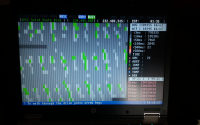Hello.
I have Silicon Image SSDs installed in 10 laptops.
Unfortunately, during the tests with the MHDD program, bad sectors were shown. As the equipment was under warranty, I sent it back, but I got a feedback:
Of course, the complaint was not accepted. In fact, there is such information (currently not available, but it is here https://webcache.googleusercontent.com/search...IJ:https://www.silicon-power.com/web/FAQ+&cd= 1 & hl = en & ct = clnk = en & gl)
I wanted to get information from you whether the credibility of the MHDD program in the case of SSDs has nothing to do with reality?
For comparison, scanning chkdsk / r / f disks for empty areas did not detect bad sectors.
I have Silicon Image SSDs installed in 10 laptops.
Unfortunately, during the tests with the MHDD program, bad sectors were shown. As the equipment was under warranty, I sent it back, but I got a feedback:
Quote:SSD disks do not have physical sectors like HDD and therefore MHDD shows this information.
The website of the Silicon Power disc manufacturer also includes the following information:
https://www.silicon-power.com/web/FAQ
? Why does the computer detect a bad sector on the SSD? Is it damaged? SSDs do not get bad sectors since they have no physical sectors. Therefore, traditional hard drive detection tools are not suitable for SSD examination. ?
Of course, the complaint was not accepted. In fact, there is such information (currently not available, but it is here https://webcache.googleusercontent.com/search...IJ:https://www.silicon-power.com/web/FAQ+&cd= 1 & hl = en & ct = clnk = en & gl)
I wanted to get information from you whether the credibility of the MHDD program in the case of SSDs has nothing to do with reality?
For comparison, scanning chkdsk / r / f disks for empty areas did not detect bad sectors.



